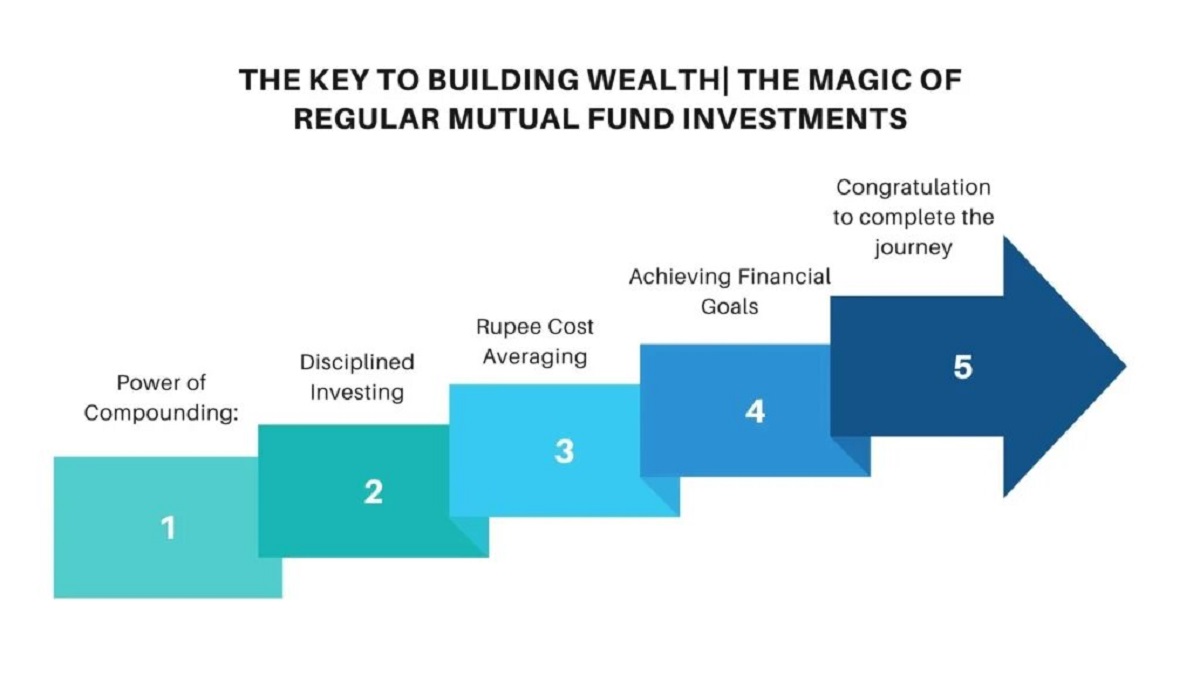Introduction
Welcome to the world of mutual funds! Investing in mutual funds can be an excellent way to grow your wealth and achieve your financial goals. However, once you’ve invested in mutual funds, it is crucial to track their performance regularly. Tracking your mutual fund investments allows you to stay informed about the progress of your investments, make timely decisions, and ensure that your portfolio aligns with your financial objectives.
Tracking mutual funds may sound complicated, but with advancements in technology and the availability of various tools, it has become much easier. Whether you are a seasoned investor or just starting, there are several methods you can utilize to keep track of your mutual fund investments.
In this article, we will explore different ways to track your mutual fund investments effectively. We will discuss online investment portals, portfolio management tools, using Excel spreadsheets, and consulting with a financial advisor. By the end of this article, you will have a solid understanding of the options available to you and how to make the most of them.
Before we dive into the various tracking methods, let’s take a moment to understand why it is essential to track your mutual fund investments in the first place. By regularly monitoring your investments, you can keep a close eye on their performance and make informed decisions about your portfolio.
Tracking your mutual fund investments allows you to identify any underperforming funds and take necessary action. It helps you stay updated on market trends, news, and economic factors that can impact your investments. Additionally, tracking allows you to evaluate whether your mutual funds are still aligned with your risk tolerance, investment goals, and time horizon.
Now that you understand the importance of tracking your mutual fund investments, let’s explore the different methods you can use to accomplish this task efficiently.
Why Should You Track Your Mutual Fund Investments?
Tracking your mutual fund investments is a crucial aspect of being a smart investor. It allows you to stay informed about the performance of your funds and make strategic decisions based on market trends and financial goals. In this section, we will delve into the reasons why tracking your mutual fund investments is essential.
1. Performance Monitoring: By tracking your mutual fund investments, you can keep a close eye on their performance. Regularly monitoring your funds allows you to evaluate how they are performing compared to their benchmarks and other funds in the same category. This information helps you gauge the effectiveness of your investment and make necessary adjustments if needed.
2. Risk Management: The financial markets are dynamic, and investments are subject to various risks. Tracking your mutual funds enables you to assess their risk exposure and make informed decisions. If a fund becomes riskier than expected, you can take corrective actions and rebalance your portfolio to maintain a suitable risk level.
3. Portfolio Diversification: Mutual fund tracking helps you verify if your portfolio is adequately diversified across asset classes, sectors, and geographies. It ensures that you are not overly invested in a particular investment category, reducing potential risks associated with concentrated holdings. By monitoring your funds, you can identify any gaps in your diversification strategy and make necessary adjustments to ensure a well-rounded portfolio.
4. Investment Goal Alignment: Tracking your mutual funds allows you to evaluate whether your investments are aligned with your financial goals. Over time, your objectives or time horizon might change, and it is essential to ensure that your funds are still in sync with your investment needs. Regularly tracking your funds helps you analyze their performance in relation to your goals and make adjustments accordingly.
5. Market Insights: Mutual fund tracking keeps you updated on market trends, economic factors, and industry news that can affect your investments. Staying informed allows you to make well-informed investment decisions and take advantage of potential opportunities.
6. Tax Planning: Tracking your mutual fund investments aids in tax planning and optimizing tax efficiency. By being aware of the gains or losses in your funds, you can strategically harvest tax losses/savings and plan your tax liability effectively.
By actively tracking your mutual fund investments, you can stay in control of your portfolio, make informed decisions, and achieve your financial goals more effectively.
Ways to Track Mutual Fund Investments
Tracking your mutual fund investments doesn’t have to be a daunting task. There are several convenient and efficient methods you can utilize to stay on top of your investments. In this section, we will explore four popular ways to track mutual fund investments.
1. Online Investment Portals: Many financial institutions and investment platforms provide online portals that allow you to track your mutual fund investments in one convenient location. These portals offer real-time information on the performance, holdings, and dividends of your funds. You can access your investment statements, transaction history, and even set up alerts to stay updated on any changes or critical events related to your funds. Online portals can be accessed through a website or mobile app, making it easy to track your investments on the go.
2. Portfolio Management Tools: Portfolio management tools are software or applications designed to help you monitor and manage your investments. These tools allow you to consolidate all your mutual fund investments in one place, along with other assets like stocks and bonds. They provide a comprehensive view of your portfolio, including performance analysis, asset allocation, and historical data. Some portfolio management tools even offer additional features like goal tracking, risk assessment, and tax optimization. By utilizing these tools, you can track your mutual fund investments efficiently and gain valuable insights into your overall investment strategy.
3. Utilizing Excel Spreadsheets: For the more hands-on investors, utilizing Excel spreadsheets can be an effective way to track mutual fund investments. By setting up a spreadsheet, you can manually record the details of your funds, such as the NAV (Net Asset Value), purchase date, investment amount, and dividends received. You can update the spreadsheet periodically with the latest information from your investment statements or online sources. Excel spreadsheets provide flexibility and customization options, allowing you to analyze and track your investments according to your specific preferences.
4. Consult with a Financial Advisor: If tracking your mutual fund investments seems overwhelming or you prefer professional guidance, consulting with a financial advisor can be a wise choice. A financial advisor can assist you in tracking and evaluating the performance of your mutual fund investments. They can provide insights, perform in-depth analysis, and make recommendations based on your investment goals and risk tolerance. Working with a financial advisor also offers the advantage of personalized advice and ongoing support, ensuring that your investments are aligned with your financial objectives.
Choose the tracking method that suits your preferences and investment style. You can even combine multiple methods to create a comprehensive approach to monitor your mutual fund investments effectively.
Using Online Investment Portals
One of the most convenient and popular ways to track your mutual fund investments is by utilizing online investment portals. Many financial institutions and investment platforms offer user-friendly online portals that provide a wealth of information about your funds in one centralized location.
By logging into your online investment account, you can access real-time updates on the performance of your mutual funds, including their net asset value (NAV), historical returns, and dividend payouts. These portals also provide detailed reports on your holdings, transaction history, and any fees or expenses associated with your investments.
Here are some key features and benefits of using online investment portals to track your mutual fund investments:
- Portfolio Overview: Online investment portals typically offer a clear and concise overview of your entire portfolio. You can see a snapshot of your mutual fund holdings, their current market value, and the overall diversification of your investments. This allows you to assess the performance of your portfolio at a glance.
- Transaction History: These portals provide a detailed transaction history, giving you insight into your past purchases, redemptions, and dividend reinvestments. You can review the dates and amounts of your transactions, making it easy to track the progression of your investments over time.
- Performance Insights: Online investment portals often offer various performance metrics and tools to help you assess the performance of your mutual funds. You can compare your funds’ performance against industry benchmarks, track their returns over different time periods, and analyze the risk associated with your investments.
- Document Access: Important documents related to your mutual fund investments, such as prospectuses, annual reports, and tax statements, are usually accessible through online portals. This makes it convenient to review and download these documents whenever you need them.
- Customized Alerts: Many online portals enable you to set up personalized alerts. You can receive notifications about any changes in your funds’ NAV, upcoming dividend payments, or significant news related to your investments. These alerts help you stay informed and take timely action when necessary.
- Mobile Accessibility: Most online investment portals have mobile applications, allowing you to track your mutual fund investments on the go. You can conveniently access your portfolio and receive real-time updates on your smartphone or tablet, making it easier to stay on top of your investments no matter where you are.
Using online investment portals to track your mutual fund investments provides you with the convenience, accessibility, and comprehensive information needed to make informed decisions about your portfolio. It streamlines the tracking process and empowers you to stay actively engaged with your investments.
Using Portfolio Management Tools
Another effective way to track your mutual fund investments is by utilizing portfolio management tools. These tools are software or applications that allow you to consolidate and manage all of your investments, including mutual funds, in one centralized platform.
Portfolio management tools provide a comprehensive view of your investment portfolio, allowing you to track the performance of your mutual funds along with other assets like stocks, bonds, and ETFs. Here are some key benefits and features of using portfolio management tools to track your mutual fund investments:
- Centralized Portfolio View: Portfolio management tools give you a consolidated view of your entire investment portfolio. You can see all your mutual fund holdings, their current value, and the overall allocation of your investments. This allows you to assess the diversification and balance of your portfolio with ease.
- Real-time Performance Analysis: These tools provide real-time performance analysis of your mutual funds. You can track the NAV, historical returns, and dividend payouts of your funds, allowing you to evaluate their performance over different time periods. Some portfolio management tools also offer graphical representations and customizable charts for better visual analysis.
- Asset Allocation and Rebalancing: Portfolio management tools help you analyze the asset allocation of your portfolio. You can see the percentage allocation of your investments across different asset classes and sectors. If your portfolio becomes imbalanced due to market movements, you can use these tools to identify the areas that need rebalancing and make adjustments accordingly.
- Goal Tracking and Planning: Many portfolio management tools enable you to set and track your financial goals. You can create specific investment objectives and monitor their progress. Whether it’s saving for retirement, buying a home, or funding your child’s education, these tools help you stay on track and make informed investment decisions based on your goals.
- Risk Assessment: Portfolio management tools provide risk assessment tools and metrics to evaluate the risk associated with your mutual fund investments. You can analyze the volatility, beta, and standard deviation of your funds, allowing you to gauge the level of risk in your portfolio. This information helps you make informed decisions about your risk tolerance and potential adjustments to your investment strategy.
- Tax Optimization: Some portfolio management tools offer tax optimization features. They help you identify tax-efficient investment strategies, such as tax harvesting, to minimize your tax liability. These tools can provide you with insights and guidance on tax-efficient investment decisions to enhance your after-tax returns.
Utilizing portfolio management tools gives you a comprehensive and organized approach to track your mutual fund investments. It simplifies the tracking process, provides insightful analysis, and empowers you to make informed decisions about your portfolio based on your investment goals and risk tolerance.
Utilizing Excel Spreadsheets
If you prefer a more hands-on and customizable approach, utilizing Excel spreadsheets can be an effective way to track your mutual fund investments. Excel offers flexibility and customization options, allowing you to create a personalized tracking system that suits your specific needs.
Here are some key benefits and steps to effectively utilize Excel spreadsheets for tracking your mutual fund investments:
- Organized Data Entry: Start by creating a spreadsheet template that includes columns for important information such as the fund name, NAV, purchase date, investment amount, and dividends received. This allows you to enter and update the data for each of your mutual fund investments in an organized manner.
- Regular Updates: It’s important to update your spreadsheet regularly with the latest data from your investment statements or online sources. This ensures that you have accurate information and can track the progress of your investments over time.
- Data Calculation and Analysis: Excel provides powerful calculation functions that allow you to perform various calculations and analysis on your mutual fund data. You can calculate the overall rate of return, track the growth of your investments, and analyze the performance of individual funds using formulas and charts.
- Customized Reporting: Excel allows you to create customized reports and summaries based on your specific requirements. You can generate reports that provide insights into your portfolio performance, asset allocation, and returns. You can also create charts and graphs to visually represent your investment data.
- Visualization and Graphical Analysis: Excel’s charting capabilities can help you visualize the performance and growth of your mutual fund investments. You can create line charts, bar graphs, or pie charts to better understand the trends and patterns in your investment data.
- Data Sorting and Filtering: Excel enables you to sort and filter your mutual fund data based on various criteria. This allows you to analyze specific subsets of your investments and make comparisons between different funds or time periods.
- Backup and Security: It’s crucial to regularly save and backup your Excel spreadsheet to prevent any data loss. You can password-protect your spreadsheet to enhance its security and ensure that your investment data remains confidential.
Utilizing Excel spreadsheets for tracking your mutual fund investments gives you full control over the data and analysis process. It allows you to customize the tracking system to fit your requirements and provides insights into your portfolio performance using various calculations and graphical representations.
Consult with a Financial Advisor
If tracking your mutual fund investments on your own feels overwhelming or you would prefer expert guidance, consulting with a financial advisor can be a valuable option. A financial advisor can provide personalized advice and expertise to help you effectively track and manage your mutual fund investments.
Here are some key benefits of consulting with a financial advisor for tracking your mutual fund investments:
- Professional Expertise: Financial advisors have extensive knowledge and experience in the investment industry. They stay updated on market trends, economic conditions, and regulatory changes that can impact your investments. Their expertise can help you make informed decisions and navigate through the complexities of the mutual fund landscape.
- Individualized Advice: A financial advisor will assess your financial goals, risk tolerance, and investment objectives to provide personalized advice tailored to your unique situation. They can help you select mutual funds that align with your goals and recommend adjustments based on changes in your circumstances or the market environment.
- Portfolio Analysis: Financial advisors can analyze your portfolio and provide insights on its performance. They have tools and resources to thoroughly assess the risk and return profile of your mutual fund investments. They can identify any weak spots or areas for improvement, whether it’s diversification, asset allocation, or fund selection.
- Monitoring and Rebalancing: A financial advisor can monitor your mutual fund investments on an ongoing basis. They can track the performance and make timely recommendations for rebalancing your portfolio as needed. This proactive approach ensures that your investments stay aligned with your goals and risk tolerance.
- Behavioral Guidance: Investing can be emotional, especially during market downturns or periods of volatility. A financial advisor can provide behavioral guidance to help you stay disciplined and avoid making impulsive decisions based on short-term market fluctuations. They can keep you focused on your long-term investment strategy.
- Educational Resources: Financial advisors can help educate you about mutual funds, investment strategies, and market concepts. They can explain complex financial terms in simple language and help you develop a better understanding of your investments. This empowers you to make more informed decisions and actively participate in the tracking of your investments.
- Regulatory Compliance: Financial advisors are knowledgeable about the regulatory requirements and guidelines associated with mutual fund investments. They can ensure that your portfolio complies with legal and tax regulations, helping you avoid any potential pitfalls or penalties.
Consulting with a financial advisor for the tracking of your mutual fund investments provides you with professional guidance and expertise. They can offer individualized advice, monitor your portfolio, and help you make informed decisions to maximize your investment potential.
Tips for Effective Mutual Fund Tracking
Tracking your mutual fund investments requires attention to detail and a proactive approach. Here are some valuable tips to help you effectively track your mutual fund investments:
- Establish Clear Investment Goals: Define your investment goals and objectives clearly before you start tracking your mutual fund investments. Having a clear understanding of what you want to achieve will help you stay focused and make informed decisions that align with your financial aspirations.
- Regularly Review Fund Performance: Set a routine to review the performance of your mutual funds. While it’s important not to make knee-jerk reactions to short-term fluctuations, regularly monitoring fund performance allows you to detect any underperformance or changes in market conditions that may require adjustments to your portfolio.
- Stay Informed: Keep up with financial news, economic updates, and market trends that can impact your mutual fund investments. Understanding the broader factors influencing the market will help you make informed decisions and stay ahead of potential opportunities or risks.
- Diversify Your Portfolio: Ensure that your mutual fund investments are well-diversified across different asset classes, sectors, and geographic regions. Diversification reduces the risk of concentration and helps you capture the potential benefits of various market segments.
- Rebalance When Necessary: Regularly monitor your portfolio’s asset allocation and rebalance as needed. Over time, certain funds may outperform or underperform, causing your portfolio’s allocation to deviate from your target. Rebalancing ensures that your portfolio aligns with your desired risk level and investment strategy.
- Track Expenses: Pay attention to the expenses associated with your mutual funds, such as management fees and expense ratios. High fees can eat into your returns over time. Comparing expense ratios and seeking lower-cost funds can help optimize your investment returns.
- Utilize Technology: Take advantage of online investment portals, portfolio management tools, and mobile apps to efficiently track your mutual fund investments. These tools can provide real-time updates, performance analytics, and customized reports to help you stay on top of your portfolio effortlessly.
- Review Tax Implications: Understand the tax implications of your mutual fund investments. Keep track of capital gains distributions, dividend payments, and any tax-efficiency strategies offered by your funds. This knowledge can help you optimize your tax planning and minimize your tax liability.
- Seek Professional Advice, If Needed: If you find it challenging to track your mutual fund investments effectively or require expert guidance, consider consulting with a financial advisor. They can offer personalized advice, portfolio analysis, and ongoing support to help you make informed investment decisions.
- Stay Disciplined: It’s crucial to stay disciplined and avoid making emotional decisions based on short-term market fluctuations. Stick to your investment plan, review your portfolio periodically, and make adjustments based on careful analysis rather than reacting to market noise.
By incorporating these tips into your mutual fund tracking process, you can make more informed decisions and stay on track toward achieving your financial goals.
Conclusion
Tracking your mutual fund investments is a crucial aspect of being a smart investor. It allows you to stay informed about the performance of your funds, make strategic decisions, and ensure that your portfolio aligns with your financial objectives.
In this article, we explored various ways to track your mutual fund investments effectively. Online investment portals provide real-time access to your fund performance and transaction history, while portfolio management tools offer comprehensive portfolio tracking and analysis. Utilizing Excel spreadsheets allows for a more customizable approach, and consulting with a financial advisor provides personalized guidance and expertise.
To track your mutual fund investments successfully, it’s essential to establish clear investment goals, regularly review fund performance, stay informed about market trends, diversify your portfolio, and rebalance when necessary. Utilizing technology, tracking expenses, and considering tax implications are also critical factors in effective tracking. Seeking professional advice when needed and staying disciplined throughout the process ensures that you make sound investment decisions based on your specific financial goals and risk tolerance.
By implementing these tips and choosing the tracking method that suits your preferences and investment style, you can stay actively engaged with your mutual fund investments, make informed decisions, and achieve your financial goals with greater confidence.

























